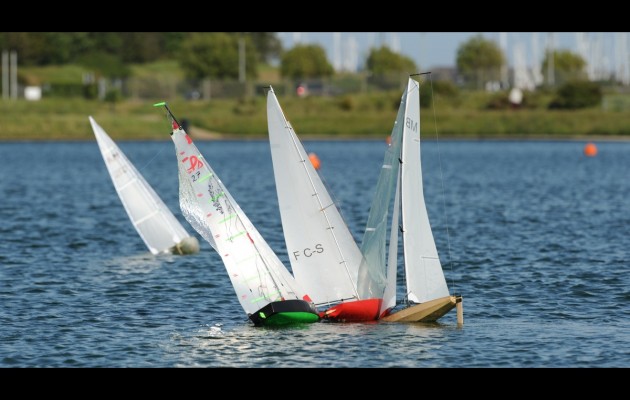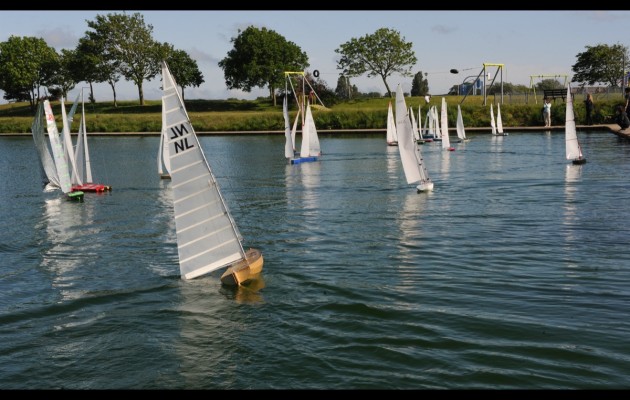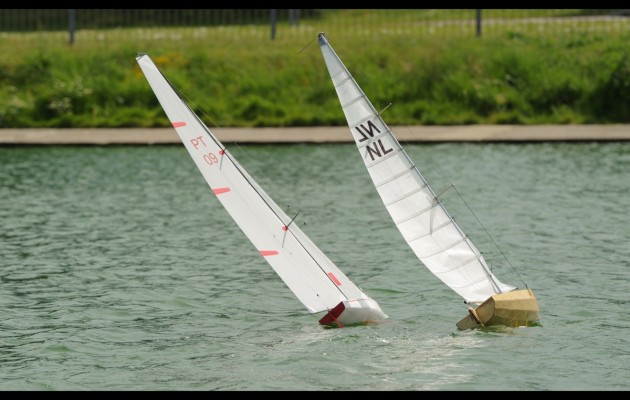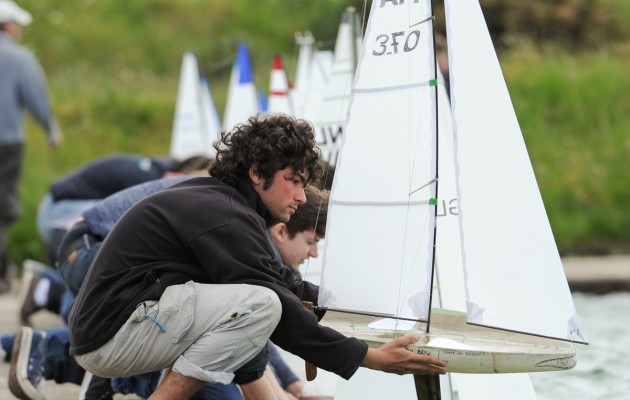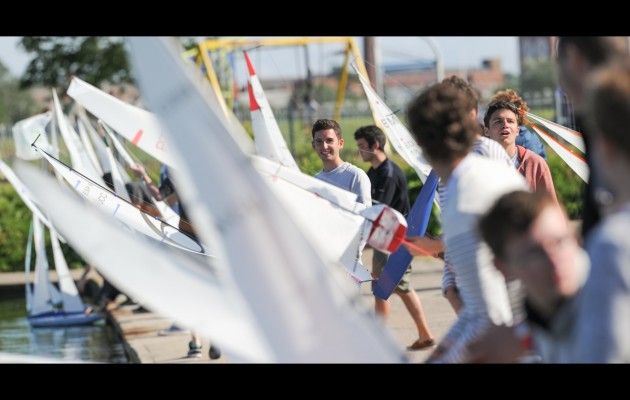Students from Southampton Solent University design, build and race model boats in end of year regatta whose previous winners have included some now globally successful designers and racers. Rupert Rowe reports
While the Volvo Ocean Race boats were crashing through the Bay of Biscay, 30 up and coming yacht and power craft designers at Southampton Solent University were putting their skills to the test in an annual model yacht race.
First-year students spent 100 hours designing and building the vessels to conform to specific yacht design rules, before putting their inventions to the test on Gosport Boating Lake.
The yachts race a windward/leeward course while the student’s university lecturers closely gauge each yacht’s individual attributes. The students are then awarded up to 15 per cent of their final mark based on their yacht’s performance on the water. The other 85 per cent of the marks come from the computer aided design (CAD) phase and subsequent build-quality.
Although conditions are undoubtedly considerably more comfortable than those the Volvo fleet was experiencing a few days ago, the competition is just as intense. A lot of these students aspire to become top yacht designers of boats such as the Volvo 65 and, given the programme’s pedigree, they are well on their way to doing so.
The French dominated this year’s podium with Pierre-Anton Tesson and Aladin Montel taking first and third place respectively, while Marin Lauber of Switzerland took second.
Programme group-leader, Giles Barkley said: “Congratulations to Pierre-Antoine on a very well-deserved win. All three boats were excellent, beautifully designed and built.”
With past race winners including current designers of Open 60 racing yachts as well as designers on Ben Ainslie Racing’s Americas Cup campaign, the incentive for winning is obvious and the resulting designs are varied.
The winning design this year was a classical shallow draught canoe body hull with hard chines and a 30cm keel (the maximum available). The boat was moulded over a male plug using one layer of glass and fitted with lightweight balsa bulkheads. As yet no student has tried to make a foiling model although given the way that sailing is going Barkley quipped it wouldn’t be long.
Giles Barkley said they have run this model race since the course started 25 years ago and it is clear that the students “who put the effort into their design and subsequently do well in the race, have tended to go on to be successful designers of all types of yachts including cruising, racing, motor and sail.” Barkley added that the course is “a breeding ground” for designers who will eventually shape the yacht design world.
Some notable alumni include Jason Ker, who is currently working on Sir Ben Ainslie’s GB America’s Cup bid; Guillame Verdier, who designed the yachts that came both 1st and 2nd at 2012 Vendée Globe; and leading UK designer Ed Dubois.
Other world-class past competitors include Helena Lucas, who won Great Britain’s first ever sailing Gold at the 2012 Paralympics; Paul Goodison who took Gold at the 2008 Olympics; and Herve Piveteau, who sailed to victory in the Production Boat Class at the Mini Transat 2008.








